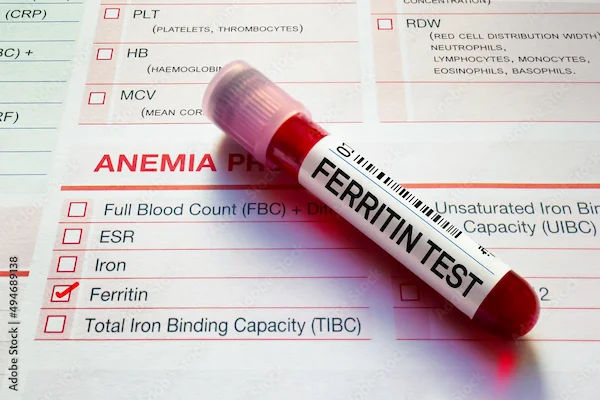Aplastic Anaemia Treatments: Symptoms, Causes And Treatment Of Aplastic Anaemia
Discover effective treatments for aplastic anaemia, including blood transfusions, stem cell transplants, immunosuppressants, and bone marrow stimulants. Learn about options to manage symptoms and improve your quality of life.

Written by Dr.Sonia Bhatt
Last updated on 3rd Jul, 2025

Introduction
Aplastic anaemia is a condition that occurs when your body stops producing enough new blood cells. This condition leaves you feeling fatigued and more susceptible to infections and uncontrolled bleeding. A rare and serious condition, aplastic anaemia can develop at any age. It can occur suddenly, or it may develop gradually and worsen over time. The severity of the condition can vary, ranging from mild to severe.
Treatment for aplastic anaemia may include medications, blood transfusions, or a stem cell transplant, also known as a bone marrow transplant. In this article, we will explore aplastic anaemia and the various treatments available.
Symptoms of Aplastic Anaemia
Aplastic anaemia may not cause any symptoms initially. However, when symptoms do occur, they can include:
Fatigue
Shortness of breath
Rapid or irregular heart rate
Pale skin
Frequent or prolonged infections
Unexplained or easy bruising
Nosebleeds and bleeding gums
Prolonged bleeding from cuts
Skin rash
Dizziness
Headache
Fever
Aplastic anaemia can either be short-lived or chronic, and in some cases, it can become severe or even fatal.
Causes of Aplastic Anaemia
Stem cells in the bone marrow are responsible for producing blood cells, including red blood cells, white blood cells, and platelets. In aplastic anaemia, these stem cells are damaged, leading to either an empty bone marrow (aplastic) or a bone marrow that contains very few blood cells (hypoplastic).
1. Common causes of aplastic anaemia include:
Immune System Attack: The most common cause is when the body’s immune system attacks the stem cells in the bone marrow.
Radiation and Chemotherapy: While these cancer treatments target cancer cells, they can also damage healthy cells, including those in the bone marrow, which may result in temporary aplastic anaemia.
Exposure to Toxic Chemicals: Chemicals such as pesticides, insecticides, and benzene (found in gasoline) have been linked to aplastic anaemia. The condition may improve if the exposure to these chemicals is avoided.
Medication Use: Certain medications, such as those for treating rheumatoid arthritis and some antibiotics, can cause aplastic anaemia.
Autoimmune Disorders: In autoimmune conditions, where the immune system attacks healthy cells, the stem cells in the bone marrow may also be affected.
Viral Infections: Viruses like hepatitis, Epstein-Barr, cytomegalovirus, parvovirus B19, and HIV can cause damage to the bone marrow and contribute to the development of aplastic anaemia.
Pregnancy: In rare cases, a woman’s immune system may attack the bone marrow during pregnancy.
Unknown Factors: In many cases, the exact cause of aplastic anaemia is unknown, and it is referred to as idiopathic aplastic anaemia.
2. Connections with Other Rare Disorders
Some individuals with aplastic anaemia also have a rare condition called paroxysmal nocturnal haemoglobinuria, which causes red blood cells to break down prematurely. This condition can result in aplastic anaemia, or aplastic anaemia may develop into paroxysmal nocturnal haemoglobinuria.
Fanconi’s anaemia, a rare inherited disorder, can lead to aplastic anaemia. Children born with Fanconi’s anaemia are typically smaller than average and may have birth defects, such as underdeveloped limbs. Diagnosis is made through blood tests.
Risk Factors for Aplastic Anaemia
Aplastic anaemia is a rare condition. However, certain factors can increase the risk, including:
Treatment with high-dose radiation or chemotherapy for cancer
Exposure to toxic chemicals
Use of certain prescription medications, such as chloramphenicol (for bacterial infections) and gold compounds (used for rheumatoid arthritis)
Certain blood disorders, autoimmune diseases, and serious infections
Pregnancy, although this is rare
Diagnosis of Aplastic Anaemia
To diagnose aplastic anaemia, several tests are conducted to assess the condition and confirm the presence of the disease.
Blood Tests: Normally, the levels of red blood cells, white blood cells, and platelets remain within specific ranges. In aplastic anaemia, all three of these blood cell types are found to be low. Blood tests help to identify these abnormalities, which are key indicators of the condition.
Get Your Aplastic Anaemia Checked
Bone Marrow Biopsy: A bone marrow biopsy is essential to confirm a diagnosis of aplastic anaemia. During this procedure, a doctor uses a needle to remove a small sample of bone marrow from a large bone, typically the hipbone. The sample is then examined under a microscope to rule out other blood-related disorders. In aplastic anaemia, the bone marrow contains fewer blood cells than normal. A bone marrow biopsy is crucial for confirming the diagnosis of the condition.
Bone Marrow Aspiration: In addition to the biopsy, a bone marrow aspiration is often performed. This involves the use of a thin needle to remove a small amount of liquid bone marrow from the back of the hipbone (pelvis). This procedure is usually done at the same time as the bone marrow biopsy. A small piece of bone tissue, along with the enclosed marrow, is extracted for examination.
Once a diagnosis of aplastic anaemia has been confirmed, further tests may be necessary to determine the underlying cause of the condition.
Treatment Approaches
The treatment for aplastic anaemia varies depending on the severity of the condition and the patient's age. Options include observation, blood transfusions, medications, or bone marrow transplantation. Severe aplastic anaemia, where blood cell counts are critically low, is life-threatening and requires urgent hospitalisation.
1. Blood Transfusions
Although blood transfusions do not cure aplastic anaemia, they can help manage bleeding and relieve symptoms by providing the blood cells that your bone marrow is not producing. The following transfusions may be given:
Red blood cells: These raise red blood cell counts, helping to alleviate anaemia and fatigue.
Platelets: These help prevent excessive bleeding.
While there is generally no limit to the number of blood transfusions, complications can arise with frequent transfusions. Transfused red blood cells contain iron, which can accumulate in the body and cause damage to vital organs if left untreated. Medications are available to help remove excess iron. Additionally, over time, your body might develop antibodies to the transfused blood cells, making them less effective. The use of immunosuppressant medications can reduce the likelihood of this complication.
2. Stem Cell Transplant
A stem cell transplant (also known as a bone marrow transplant) may be the only successful treatment for individuals with severe aplastic anaemia. This procedure is typically recommended for younger patients who have a matching donor, often a sibling.
The procedure involves depleting the diseased bone marrow using chemotherapy or radiation. Healthy stem cells are then collected from a donor's blood and injected intravenously into the patient, where they travel to the bone marrow and begin producing new blood cells.
This treatment requires a lengthy hospital stay, and post-transplant, patients must take drugs to prevent their immune system from rejecting the transplanted stem cells. However, stem cell transplants carry risks, including the potential rejection of the transplant and life-threatening complications. Not everyone is a suitable candidate for a transplant or able to find a suitable donor.
3. Immunosuppressants
For those who cannot undergo a stem cell transplant or whose aplastic anaemia is caused by an autoimmune disorder, immunosuppressant drugs are used. These medications, such as cyclosporine (Gengraf, Neoral, Sandimmune) and anti-thymocyte globulin, suppress the immune system's activity that is damaging the bone marrow, helping it recover and produce new blood cells. These drugs are often used in combination.
Corticosteroids, such as methylprednisolone (Medrol, Solu-Medrol), are commonly used alongside these immunosuppressants. While these treatments can be effective, they weaken the immune system, and anaemia may return once treatment stops.
4. Bone Marrow Stimulants
Certain medications, including colony-stimulating factors such as sargramostim (Leukine), filgrastim (Neupogen), and pegfilgrastim (Neulasta), along with epoetin alfa (Epogen/Procrit) and eltrombopag (Promacta), stimulate the bone marrow to produce new blood cells. These growth factors are often used in combination with immunosuppressive drugs.
5. Antibiotics and Antivirals
As aplastic anaemia weakens the immune system, it leaves individuals more vulnerable to infections. If you have aplastic anaemia, it's important to contact your doctor at the first sign of an infection, such as a fever, to prevent it from becoming life-threatening. In severe cases, doctors may prescribe antibiotics or antiviral medications to prevent infections.
6. Other Treatments
Aplastic anaemia that is caused by radiation and chemotherapy treatments for cancer generally improves once those treatments cease. Similarly, aplastic anaemia caused by certain medications will typically improve once the drugs are discontinued.
Pregnant women with aplastic anaemia are often treated with blood transfusions. In many cases, pregnancy-related aplastic anaemia improves after the pregnancy ends. If this does not occur, further treatment will be required.
Consult Top Doctors To Know About Treatment Options
Lifestyle and Dietary Considerations
To manage aplastic anaemia, consider the following:
Rest: Fatigue is common, so take breaks and rest when needed to conserve energy.
Avoid Contact Sports: Prevent injury or bleeding by avoiding activities that can cause cuts or falls.
Prevent Infections: Wash hands frequently, avoid sick people, and seek medical attention if you develop symptoms of infection.
Diet: Eat a balanced diet with iron-rich foods, and ensure adequate intake of folate, vitamin B12, and vitamin C to support blood cell production.
Limit Alcohol: Alcohol can suppress bone marrow and weaken your immune system, so it's best to avoid or limit consumption.
Consult Top Doctors
Consult Top Doctors To Know About Treatment Options

Dr. Aman Kumar
General Physician/ Internal Medicine Specialist
29 Years • MBBS, MD
Chennai
Apollo Hospitals Heart Centre Thousand Lights, Chennai
(75+ Patients)

Dr. Hari Krishna
General Physician/ Internal Medicine Specialist
13 Years • MD (Gen. Med. )
Chennai
Apollo Hospitals Greams Road, Chennai
(50+ Patients)

Dr Rajashree Dhongade
General Physician/ Internal Medicine Specialist
9 Years • MD.Medicine,Fellowship in Critical Care Medicine (MUHS)
Nashik
Apollo Hospitals Nashik, Nashik
(25+ Patients)

Dr. Satish Khanna
General Physician/ Internal Medicine Specialist
32 Years • MBBS, MD (Med.)
Delhi
Apollo Hospitals Indraprastha, Delhi
(50+ Patients)

Dr. M. Krishna Bharath Reddy
General Physician/ Internal Medicine Specialist
10 Years • MD General Medicine, MRCP (London) and DM( Critical Care)
Chennai
Apollo Hospitals Greams Road, Chennai
Consult Top Doctors

Dr. Aman Kumar
General Physician/ Internal Medicine Specialist
29 Years • MBBS, MD
Chennai
Apollo Hospitals Heart Centre Thousand Lights, Chennai
(75+ Patients)

Dr. Hari Krishna
General Physician/ Internal Medicine Specialist
13 Years • MD (Gen. Med. )
Chennai
Apollo Hospitals Greams Road, Chennai
(50+ Patients)

Dr Rajashree Dhongade
General Physician/ Internal Medicine Specialist
9 Years • MD.Medicine,Fellowship in Critical Care Medicine (MUHS)
Nashik
Apollo Hospitals Nashik, Nashik
(25+ Patients)

Dr. Satish Khanna
General Physician/ Internal Medicine Specialist
32 Years • MBBS, MD (Med.)
Delhi
Apollo Hospitals Indraprastha, Delhi
(50+ Patients)

Dr. M. Krishna Bharath Reddy
General Physician/ Internal Medicine Specialist
10 Years • MD General Medicine, MRCP (London) and DM( Critical Care)
Chennai
Apollo Hospitals Greams Road, Chennai


.webp)

